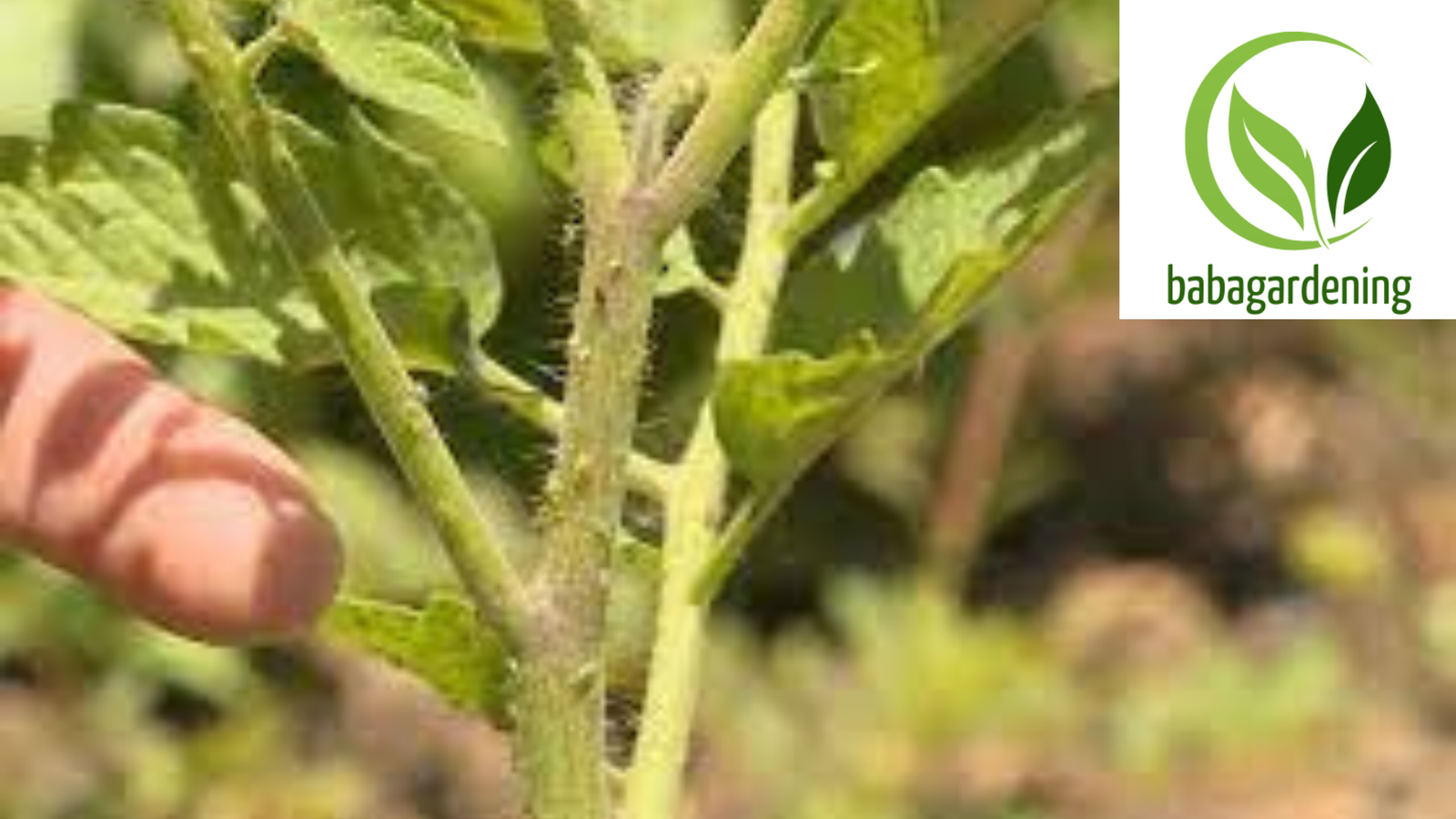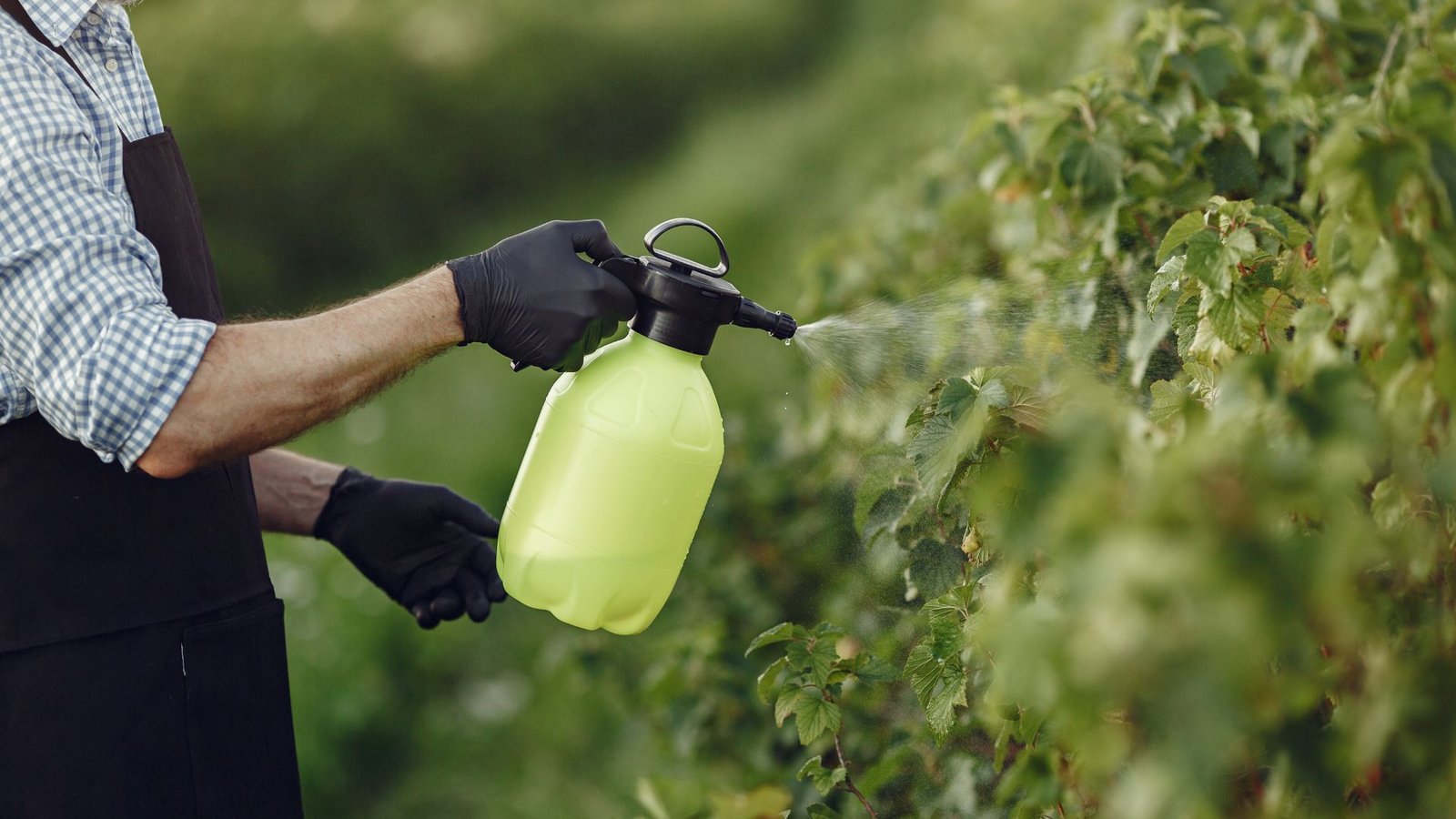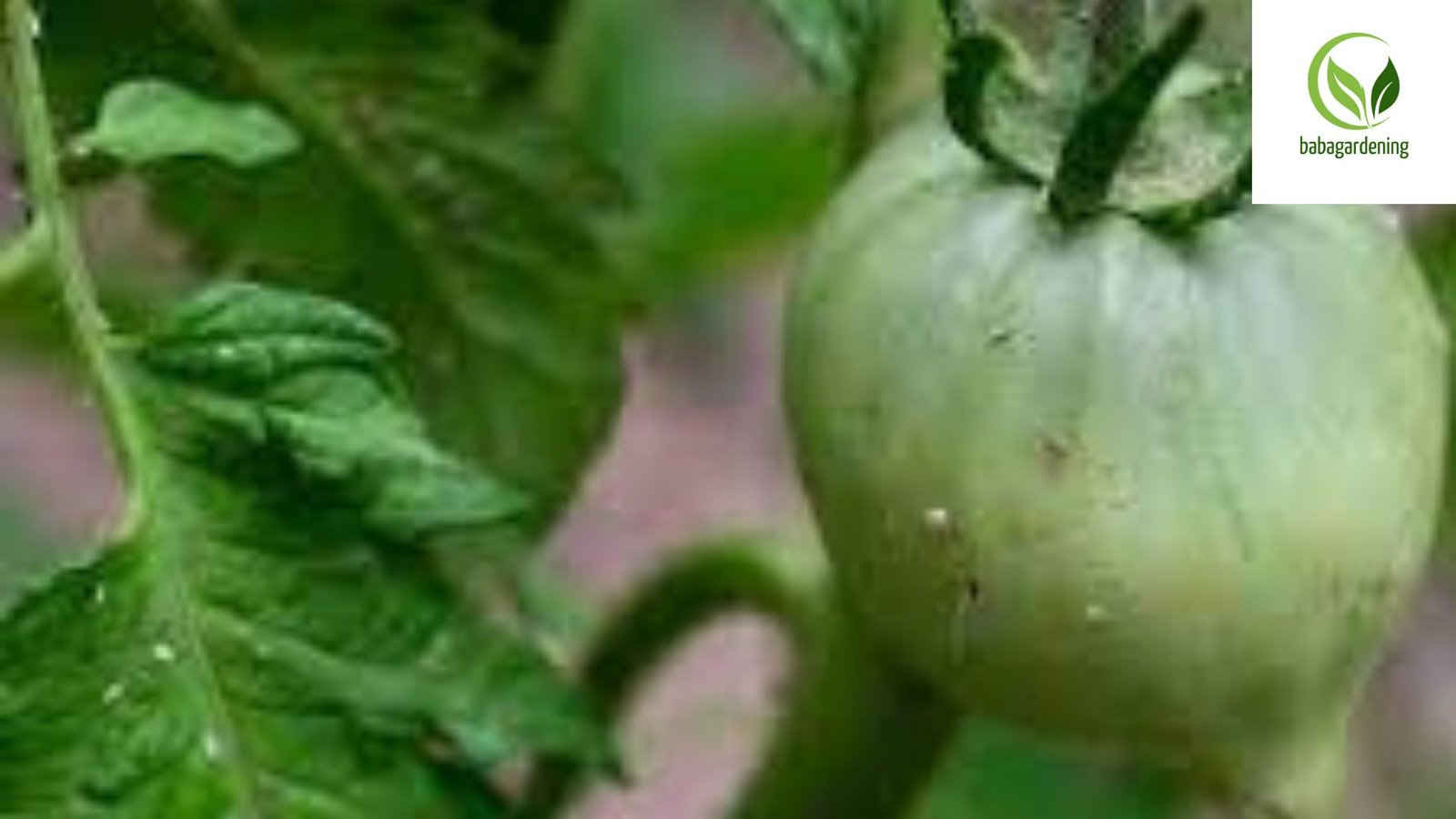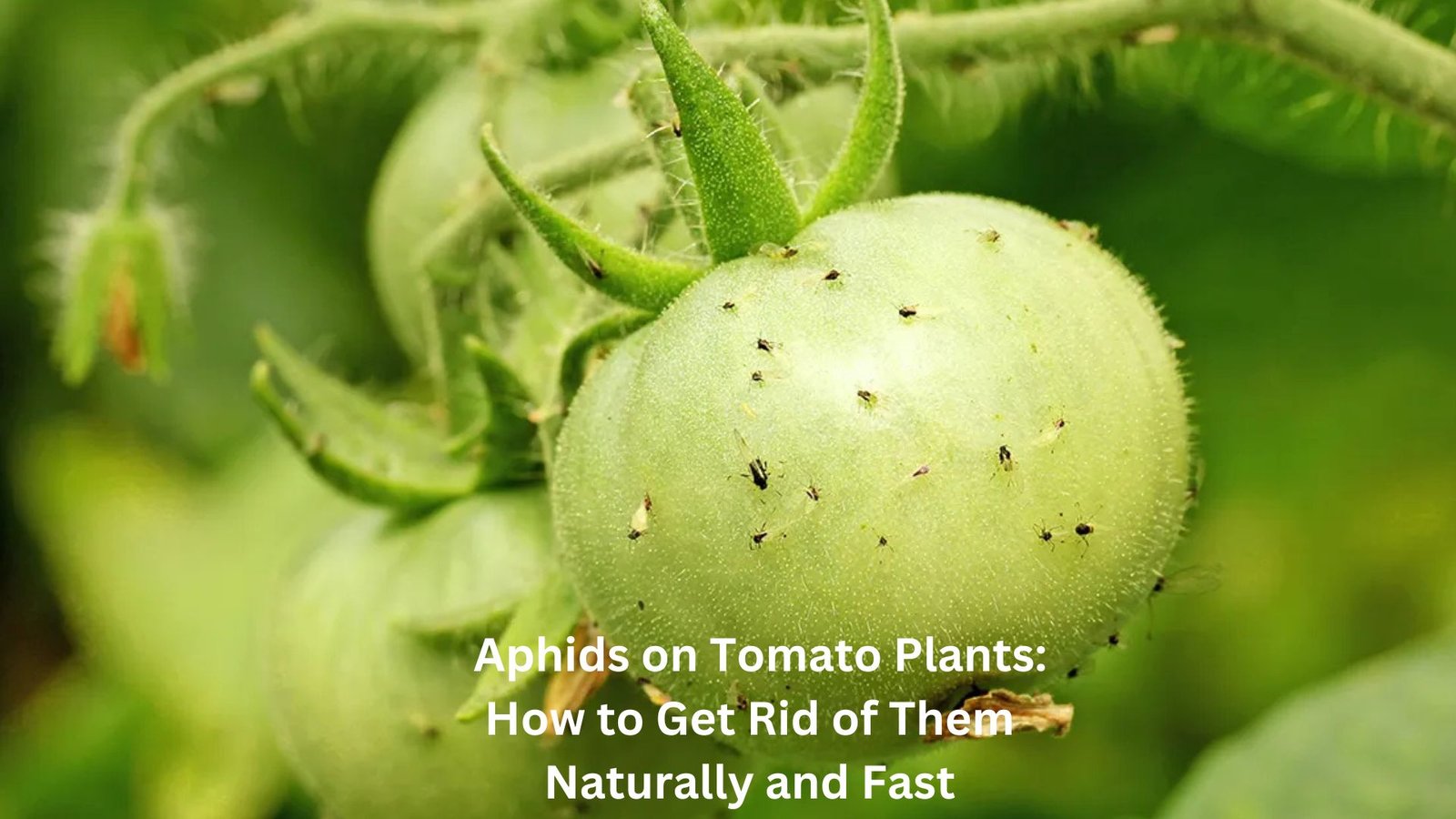Aphids on tomato plants are one of the most common and frustrating problems gardeners face across the USA. These tiny sap-sucking insects can multiply quickly, damaging leaves, stunting growth, and spreading plant diseases. If not caught early, an aphid infestation on tomatoes can ruin your crop before it even starts to bloom.
You might notice tomato leaves curling from pests or see sticky residue on the plant—both signs that aphids have arrived. Luckily, there are safe and effective ways to handle this naturally. From natural aphid remedies to encouraging beneficial insects for aphid control, this guide will show you how to protect your plants without harmful chemicals. Let’s get started!
What Are Aphids and Why They Attack Tomato Plants

Aphids are tiny, soft-bodied insects that feed by sucking sap from plants. They come in different colors like green, black, and even pink. The ones you’ll most often find on tomato plants in the USA are green peach aphids and potato aphids. They settle on young stems and under leaves, causing real damage over time.
These pests attack because tomato plants are rich in sugars and moisture. They pierce the plant tissues to drink sap, which weakens the plant and reduces growth. This leads to aphid honeydew problems—a sticky mess that attracts ants and causes fungus. Once they find a good plant, they multiply fast, and within days, you can have a full aphid infestation on tomatoes.
How to Identify Aphids on Tomato Plants

Identifying aphids on tomato leaves early is important to stop them before they spread. Aphids are usually found on the undersides of leaves, along stems, or near flower buds. They are pear-shaped, about 1/8 inch long, and often gather in clusters.
You’ll notice ants moving up and down the plant. That’s a big clue. Why ants farm aphids on tomatoes is simple: they collect the sweet honeydew aphids release. So, if you see ants, look closer—you may also have aphids. Early signs of aphids on tomato leaves also include yellowing, curling leaves and sticky residue.
Symptoms of Aphid Infestation on Tomato Plants
When aphids feed, they harm the plant in many ways. The most obvious signs of aphid damage on tomatoes include yellow, twisted, or drooping leaves. You might see black spots from sooty mold on tomato leaves, which grows on the sugary honeydew aphids produce.
Another symptom is slow plant growth. If your tomato plant looks weak, isn’t producing fruit, or the tomatoes are small and warped, aphids could be the cause. You might also notice that tomato leaves curling from pests are becoming more common as the infestation grows.
Why Aphids Are Harmful to Tomatoes and Your Garden
Aphids are more than just annoying. They’re dangerous to your whole garden. One of the worst problems is that aphids spread viruses. These viruses can cause long-term damage to your tomatoes and neighboring crops. That’s why tomato plant disease prevention is crucial.
Another issue is the buildup of honeydew, which leads to fungus. That sticky mess brings ants and reduces photosynthesis. And once ants start protecting aphids, they’ll fight off the aphids’ natural enemies. This creates an unhealthy garden environment. Aphid predators in the garden need to be able to work freely to help keep pests in check.
Natural and Organic Methods to Get Rid of Aphids on Tomato Plants

There are many aphid control organic methods that work quickly and won’t harm your garden. One of the most popular is using neem oil to kill aphids. Neem oil disrupts the pests’ life cycle without hurting bees or other beneficial bugs. Mix 1 tablespoon of neem oil with 1 teaspoon of mild soap in a quart of water. Spray in the evening to avoid harming leaves.
Another solution is insecticidal soap tomato plant treatment. This homemade or store-bought spray kills aphids on contact. It’s best to apply it every few days until you see no more pests. For a quick home remedy for aphids on tomato plants, you can use a water and garlic spray, or a mix of water and a small amount of dish soap.
| Natural Method | How It Works | Frequency |
| Neem Oil | Disrupts aphid growth | Every 5–7 days |
| Soap Spray | Kills on contact | Every 3–4 days |
| Essential Oils | Repels aphids | Weekly |
| Water Blast | Knocks aphids off | As needed |
Using Predatory Insects and Companion Planting
Nature offers great solutions too. Bringing in aphid control using ladybugs and lacewings is a smart and natural way to control infestations. These bugs eat hundreds of aphids a day and won’t hurt your tomatoes. Other natural predators of aphids in vegetable gardens include hoverflies and tiny parasitic wasps.
Pairing tomatoes with tomato companion plants that repel aphids also helps. Garlic, basil, mint, and nasturtiums are excellent choices. These tomato companion plants give off smells that aphids hate, keeping them away naturally. They also make your garden more beautiful and healthy.
When and How to Use Chemical Aphid Control Safely
If your aphid problem is out of control, you may need to use chemical sprays. But use them as a last resort. The best approach is spraying for aphids safely, using products approved for organic use. Look for options with pyrethrin or azadirachtin.
Always spray in the evening or early morning when pollinators are less active. Don’t spray on windy days. Read labels carefully. It’s important to know when to spray insecticidal soap on tomatoes for the best results—usually early in the day or right before sunset.
How to Prevent Aphids on Tomato Plants Long-Term

Prevention is key in aphid management in organic vegetable gardening. Inspect your plants daily. Check under leaves and around new growth. Catching aphids early makes it easier to stop them. Preventing aphids on tomato plants starts with good spacing, clean garden beds, and healthy plants.
Another long-term tip is using garden pest sticky traps to monitor pest activity. These traps can help you see when aphids arrive so you can take action fast. Keep your garden clean of weeds, and remove old plant debris, which often shelters pests during colder months.
Healthy Soil = Healthy Plants: Strengthening Tomato Plant Immunity
The best defense against pests is a strong plant. Tomato plant care to avoid pest infestation begins with healthy soil. Use compost, aged manure, and natural fertilizers to feed your plants from the roots up. This builds resistance and makes it harder for aphids to take hold.
You can also try diatomaceous earth for garden pests. This natural powder scratches soft-bodied pests and kills them without chemicals. Sprinkle it around your tomato bases to stop crawling pests like aphids and ants. A strong tomato plant is the best weapon in your garden.
Conclusion: Keep Your Tomatoes Safe from Aphids
Now you know how to get rid of aphids on tomato plants naturally and fast. You’ve learned about identifying aphids on tomato leaves, using natural aphid remedies, and attracting aphid predators in the garden. With the right care, prevention, and a few smart tricks, you can stop these pests without chemicals.
Your tomato garden can be lush, vibrant, and pest-free. Don’t let tiny bugs steal your joy. Keep an eye out, act fast, and remember—organic solutions for tomato aphid control not only work but protect your plants and the planet.
FAQs
1. How do you get rid of aphids on tomato plants?
Use neem oil, insecticidal soap, or introduce ladybugs to eliminate aphids naturally and fast.
2. Does soapy water really kill aphids?
Yes, soapy water breaks down their protective coating and kills them on contact.
3. Can I spray vinegar on my tomato plants?
Diluted vinegar may repel aphids, but it can harm tomato leaves—use it with caution.
4. What do aphids hate the most?
Aphids hate strong-smelling plants like garlic, mint, and basil, and natural predators like ladybugs.
5. What do aphids hate the most?
They strongly dislike neem oil, essential oils, and tomato companion plants that repel aphids.



